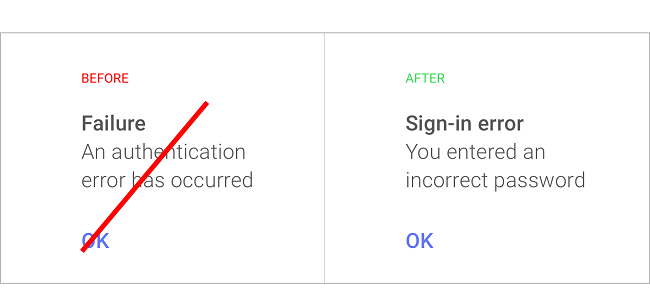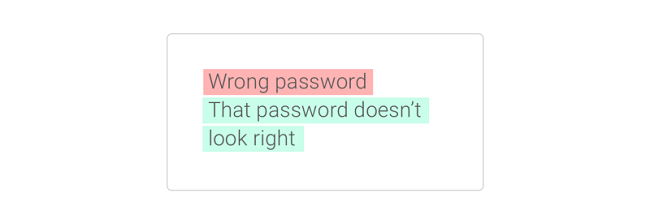
So, you’ve heard of writers, copywriters, digital writers, and all that jazz. Right? The question is, have you ever heard of a job position called UX Writer. This is not a bread loaf that just got out of the oven, it’s been there for some time; only UX designers just realized how hungry they are and started asking for it!
Unlike what many believe, the need for UX Writers is not just a fad. It’s not just some cool and trendy article of clothing, or hairdo that will die out eventually. On the contrary, marketers, and strategists are coming to understand the importance of UX writing in their content strategy, and how it adds to the experience’s information flow and the interface’s usability.
All the big players in the tech and digital media ecosystem system are looking for those hidden gems – Google’s looking, Amazon, Dropbox, Paypal, and others. Even the small folks of the ecosystem are interested in hiring User Experience Writers.

Source - UX Booth.
UX writers are part of the UX team as much as the next person in line; they attend meetings, do the research, liaise with design and development, test and iterate; they’re present in every single step of a UX process.
Today, due to the increased overlap between graphical user interfaces (GUI) and voice user interfaces (VUI), sprouts a new need in the product design industry – that which only a stellar UX writer would be able to pull off. These peeps must have a deep understanding of what is called narrative design and conversational design; they set the brand voice, and the UX writing principles.
In this article, we’ll be clarifying who the UX Writer really is, laying out the best practices of a brainy UX writer, and identifying where he comes in the UX process.
Introducing UX Writers
According to Google, UX Writers “set the tone for content and drive cohesive product narratives across multiple platforms and touchpoints; they work with a variety of UX design-related jobs including researchers, product managers, engineers, marketing, and customer operations to help establish connective language and a unified voice."
Technically, UX writing is a division within the content strategy, which is the process of developing the whole of product messaging.
On the practical level, UX writing is not only writing copy that voices out the character of an organization; it is also writing approachable, considerate, and usable content that helps the user achieve the task at hand.
By aggregating and assessing UX writers’ job descriptions, we’ve figured that a UX writer is in charge of the following:
- Understands the nature and character of the product at the UXD's project kick-off.
- Develops a brand voice and a style guide.
- Helps with generating the Information Architecture.
- Collaborates in the content strategy creation process.
- Writes copy.
- Establishes the editorial process.
- Leverages data to create valuable content.
Here are the Ground Rules!
As we’ve previously mentioned – a UX writer basically generates content that complements the design, and follows the users’ journey and emotions. Ideally, copy should be – just like design – affordable.
To make certain that you’re fishing in the right pond, as a UX writer, you must be able to create copy that’s clear, concise, and useful:
- Clear – No software/technical terminologies, only action-bound words. So per instance, if the content is addressing a newly released feature, it would be best if you write about how the user can utilize the feature, and not about how the feature itself works. Follow a verb instead of description rule.

- Concise – Does not automatically imply short, but definitely means efficient content. Every word must be placed with an incentive and goal in mind, and it should follow information hierarchy; the process is called Frontloading. As we’ve mentioned in one of our previous UX articles, users tend to scan copy in an F or Z shape, so by following a content first – design later approach, you should be creating copy that goes hand in hand with the visual elements on the web page or app.
- Useful – By useful we mean copy that guides your users, as opposed to confusing them or not giving them any feedback on where they are in their customer journey. Your content has to validate your users’ steps, and it has to tell them how to go about the interface. Let’s take a for instance, Call To Action buttons (CTA) must be informative and resourceful - view the image below.
On another note, these three elements aren’t necessarily always in line. Context and brand voice are important components to balancing the three aforementioned principles. Take a look at what Google has done – merging UX writing ground rules with their product’s voice.

Source - UX Planet.
UX Writers Are Lyrical Superheroes
Now that we’ve covered who the UX writer is, let’s take a couple of steps further to identify what makes smart UX Writers verbose superheroes.
- They’re lyrically intuitive as they try to write expected copy that satisfies the recognition rule.
- They understand the impact of human-centered language, by giving the product a tone and personality. Take MailChimp as an example, they make certain to maintain consistency, but they always take their user's state of mind in context when writing their copy.
- They’re creatively purposed, as they never refrain from combining between originality and affordability. They create content that’s both engaging and usable.
- The give mute Ariel a voice; they build the brand’s voice based on the product overview, making sure that it speaks to the distinctive personas.
UX Writers Are Not Lone Wolves
Based on our UXD Process, the different steps of designing a user experience are Strategy, Research, Analysis, Design, Production, Testing, and Iterating. UX Writers are present in each and every step of the process – they’re not solo flyers, on the contrary, they’re part of the team!
- They’re hardcore researchers as they conduct research related to the audience they will be speaking to, as part of the Human-Centric Design approach.
- They collaborate on every end of the project
- They test and iterate their copy accordingly; A/B testing helps UX writers determinate whether the personality they’ve developed speaks to their audience. Testing can help writers choose the right words as well.
Latest Business
Intelligence Report














